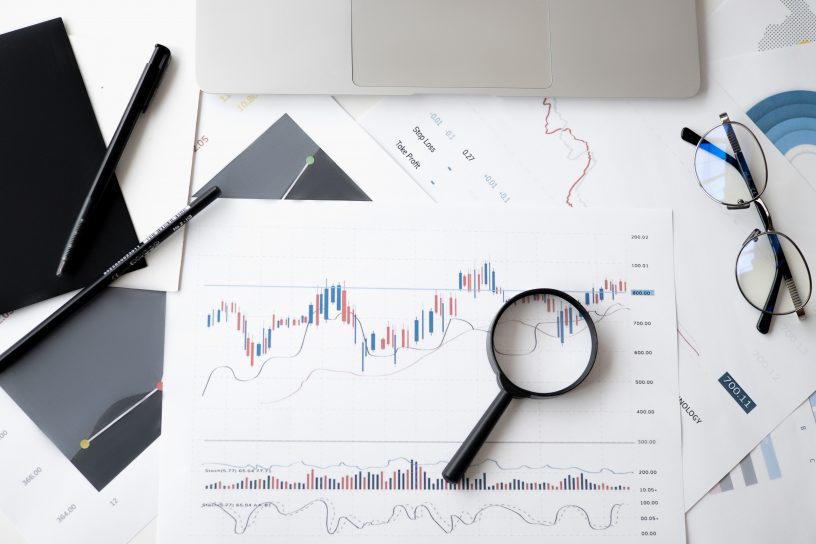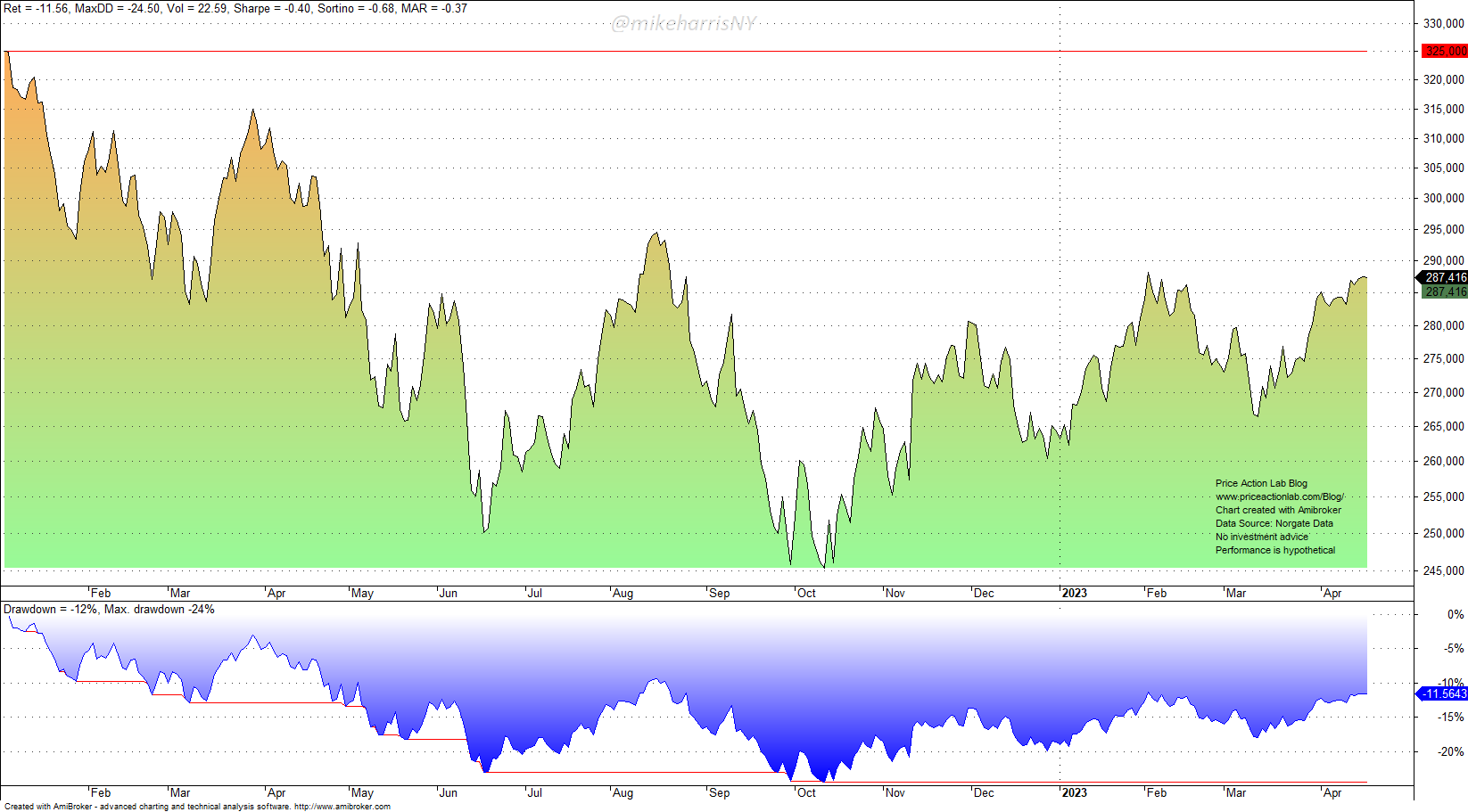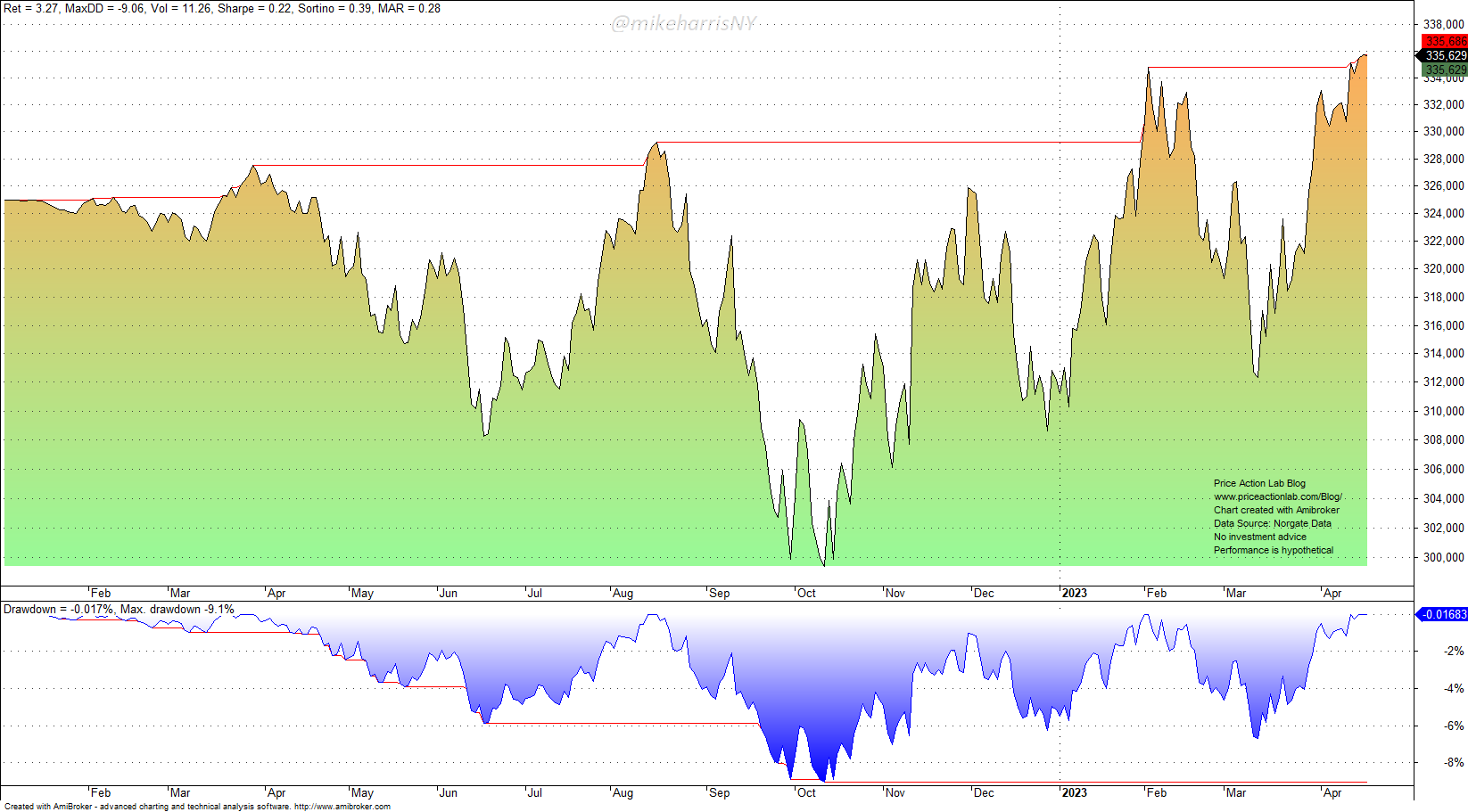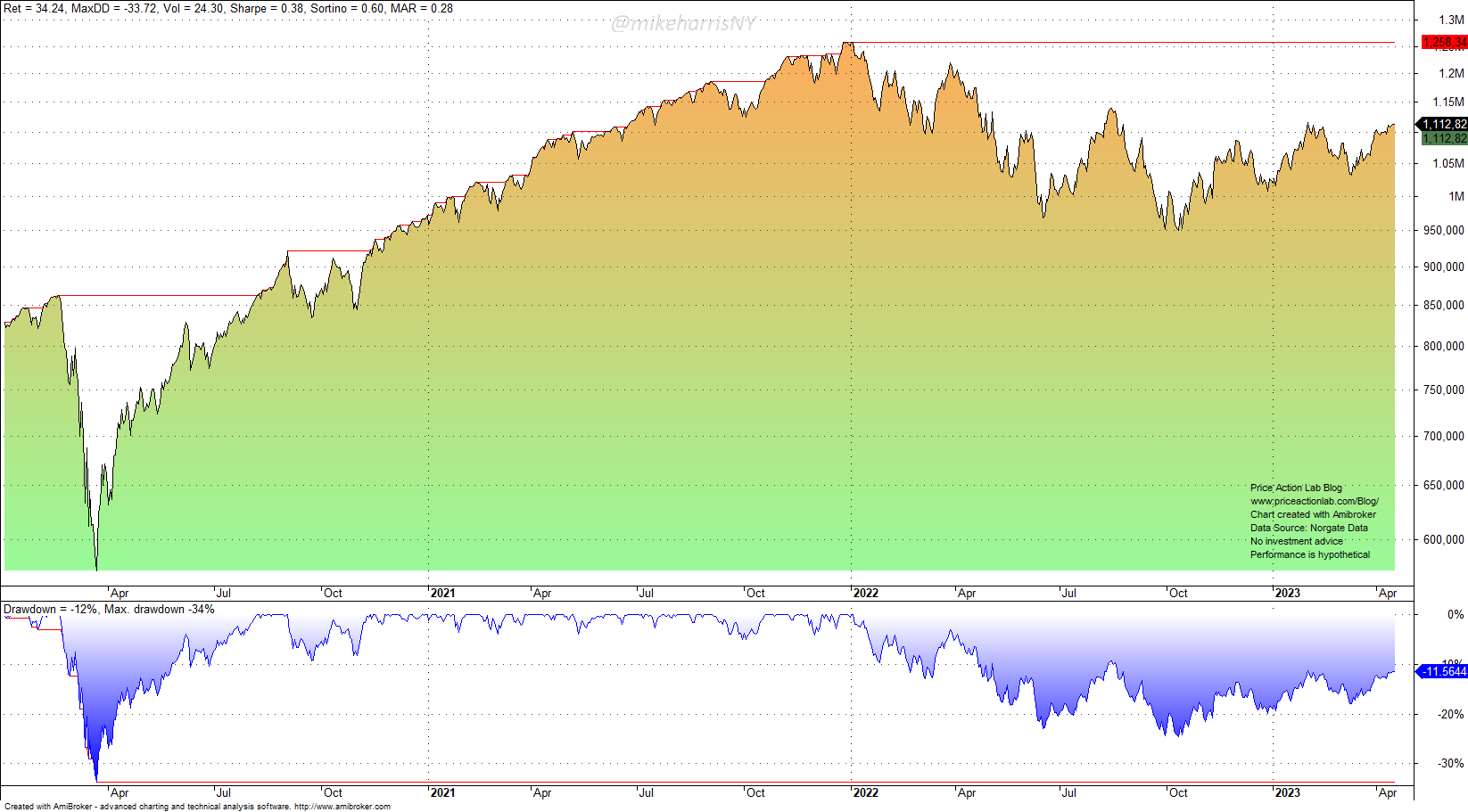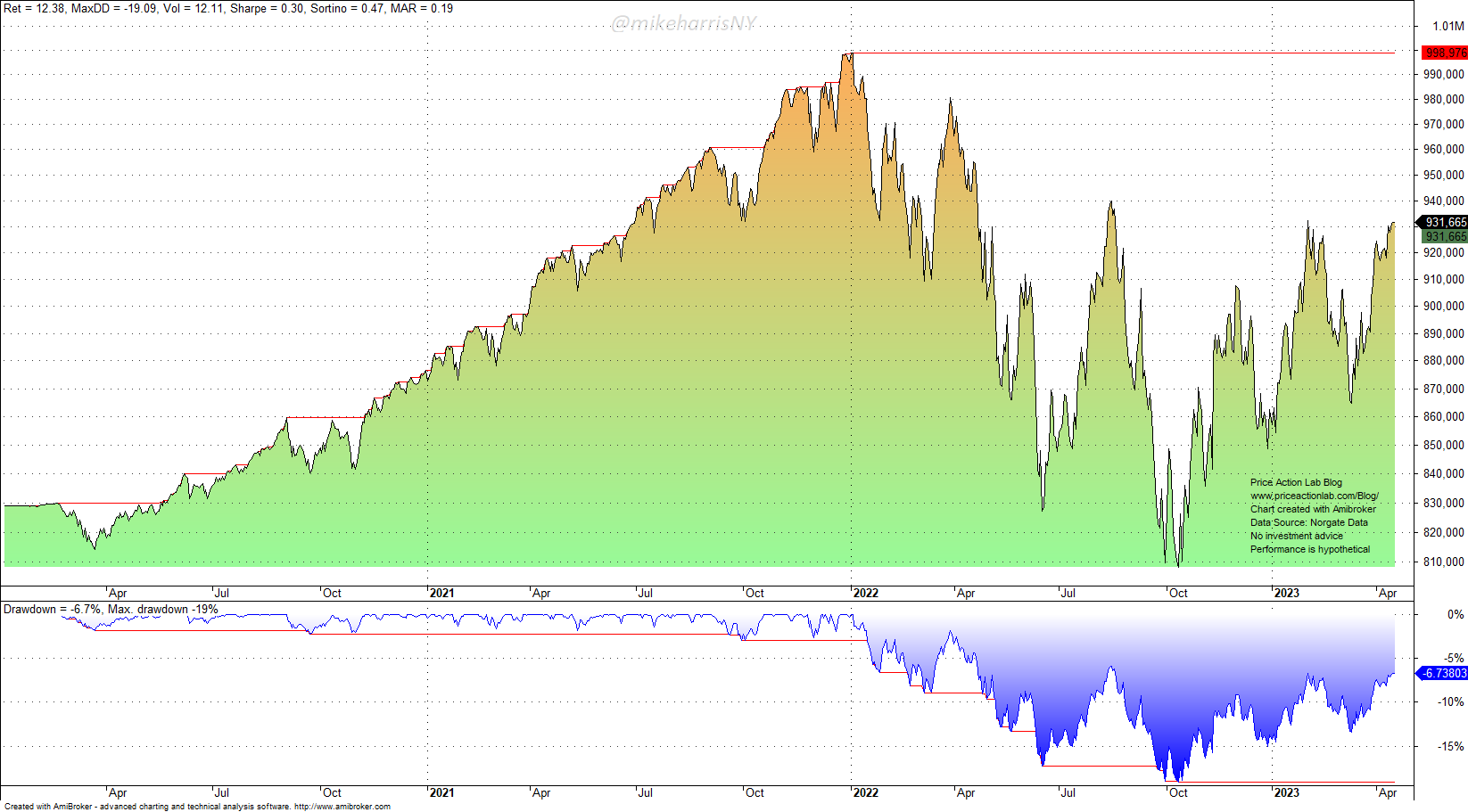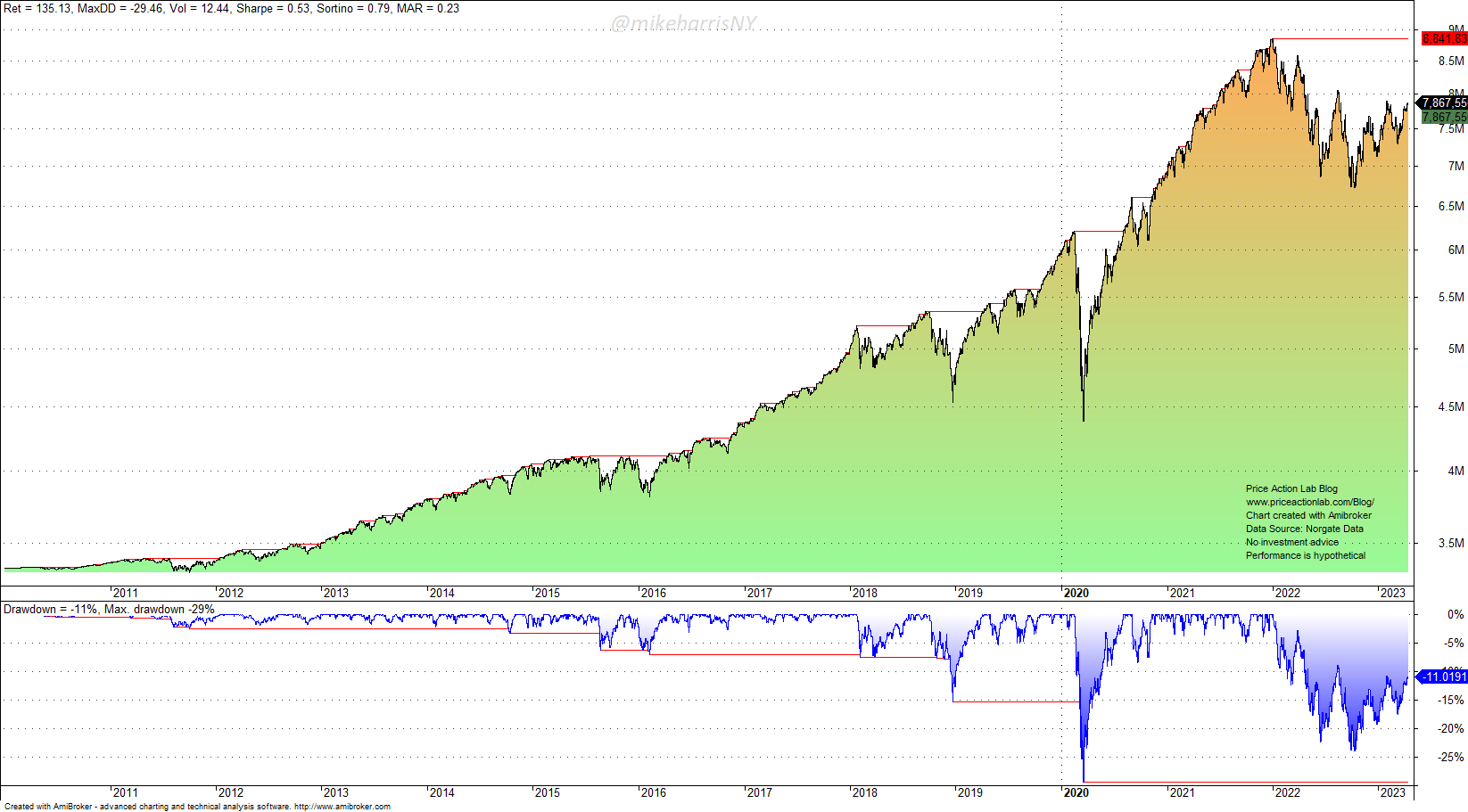Dollar-cost averaging is a controversial risk-management investment method, but unavoidable when the commitment of a large capital cannot be made. This article is about a recent discussion on social media about the merits of the method and its nature.
In a Twitter post, the following claim was made:
Irrespective of initial capital, if you purchased the same amount every day since the all-time high in S&P 500, then the investment has a positive return.
I will use the SPY ETF, since it is tradable, with an all-time high on January 3, 2022. There have been 325 trading days from the all-time high to April 19, 2023, and therefore we will compare a buy-and-hold investment with $325,000 initial capital, to a dollar-cost averaging (DCA) strategy that invested $1000 at the close of each day. Note that we assume that the investor who is dollar-cost averaging has a hypothetical capital of $325,000 but divides that into 325 increments of $1,000. This is to make the comparisons of returns fair.
Buy and Hold Performance (1/03/2022 – 04/19/2023)
The SPY ETF is down 11.5% from all-time highs, and therefore the buy and hold has generated a loss of the same magnitude so far.
Dollar-Cost Averaging Performance (1/03/2022 – 04/19/2023)
The return is 3.3% versus -11.5% for buy and hold. DCA offers advantages when prices are falling to average down, but as we will see below, it is a highly undesirable strategy when prices are trending up, although for most retail inventors it is unavoidable.
Let us look below at how the buy and hold has performed since January 2, 2020. There have been 829 days to April 19, 2023. We will assume $829,000 as starting capital and divide it into 829 increments for dollar-cost averaging.
Buy and Hold Performance (1/02/2020 – 04/19/2023)
The return is 34.2%. Below is the return for the DCA strategy.
Dollar-Cost Averaging Performance (1/02/2020 – 04/19/2023)
DCA has a return of 12.4% and underperforms the buy and hold return of 34.2%. The reason for the underperformance is the uptrend after the bottom of the pandemic crash in 2020.
Next, we compare the performance of a buy and hold and DCA since 2010, or for 3,346 days. The initial capital is $3,346,000 and divided into 3,346 increments for DCA.
Buy and Hold Performance (1/04/2010 – 04/19/2023)
The buy-and-hold return is 370%. Below is the DCA performance.
The return of the DCA strategy is 135% and much less than the return of buy and hold nearly by a factor of 3. This is a reasonable result since DCA underperforms during strong uptrends and in a market with an up drift.
Is DCA a martingale strategy?
Some accounts on Twitter fiercely opposed the notion that DCA is a martingale strategy, some due to a misconception that martingale exclusively involves doubling down when there are losses. At least one account, and the most vocal critic, lately submitted to a sub-martingale strategy in the case of DCA.
ChatGPT, based on the direction it received from an article I mentioned in my query, replied as follows:
Since DCA is not an explicit prediction about the expectation, and also since there is no absorbing barrier involved in the case of the US stock market, under the assumption of i.i.d. returns, which is a reasonable one and always respected in financial literature, it may be considered as a martingale strategy.
Conclusion
Dollar-cost averaging is a popular investment method/strategy, and even unavoidable for retail investors who periodically add funds to their portfolios. During falling markets, DCA may outperform but in the long term, its underperformance in the stock market is severe if a positive bias is maintained.
An interesting strategy could involve timing the contribution size, but this may be the subject of another article.
Premium Content
Online Books
Premium Articles
Systematic Market Signals
By subscribing you have immediate access to hundreds of articles. Premium Articles subscribers have immediate access to more than two hundred articles and All in One subscribers have access to all premium articles, books, premium insights, and market signals content.
Free Book
Subscribe for free notifications of new posts and updates from the Price Action Lab Blog and receive a PDF of the book “Profitability and Systematic Trading” (Wiley, 2008) free of charge.
Disclaimer: The premium articles are provided for informational purposes only and do not constitute investment advice or actionable content. We do not warrant the accuracy, completeness, fitness, or timeliness for any particular purposes of the premium articles. Under no circumstances should the premium articles be treated as financial advice. The author of this website is not a registered financial adviser. The past performance of any trading system or methodology is not necessarily indicative of future results. . Read the full disclaimer here.
Charting and backtesting program: Amibroker. Data provider: Norgate Data
